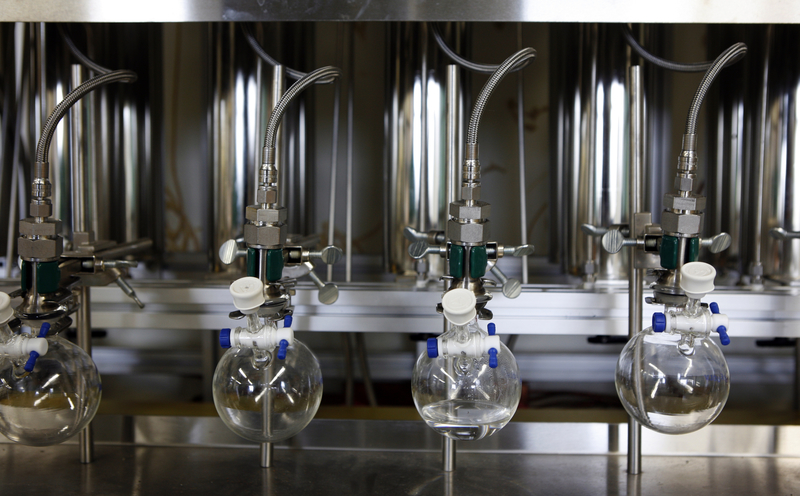Abstract: The dissociation of hexafluorosilicate has been reinvestigated due to recent suggestions that fluorosilicate intermediates may be present in appreciable concentrations in drinking water. 19F NMR spectroscopy has been used to search for intermediates in the hydrolysis of hexafluorosilicate. No intermediates were observable at 10-5 M concentrations under excess fluoride forcing conditions over the pH range of 3.5−5. A single intermediate species, assigned as SiF5- or its hydrate, was detected below pH 3.5. At moderate pH values of 4 and 5 silica oligomerization in the solutions studied made it difficult to directly determine the hexafluorosilicate equilibrium constant. Under more acidic conditions the average pKd, or negative log of the dissociation constant Kd, determined by 19F NMR measurements, was 30.6. We also investigated the behavior of hexafluorosilicate in common biological buffer reagents including phosphate/citrate, veronal/HCl buffers, and Ringer’s solution. The buffer capacity of all of these systems was found to be insufficient to prevent acidic shifts in pH when hexafluorosilicate was added. The pH change is sufficient explanation for the observed inhibition of acetylcholinesterase that was previously attributed to hexafluorosilicate hydrolysis intermediates.
—–William F. Finney, Erin Wilson, Andrew Callender, Michael D. Morris and Larry W. Beck Department of Chemistry, University of Michigan, 930 North University Avenue, Ann Arbor, Michigan 48109-1055 Environmental Science & Technology Vol. 40: Issue. 8: Pages. 2572-2577 Publication Date (Web): March 18, 2006 DOI: 10.1021/es052295s

